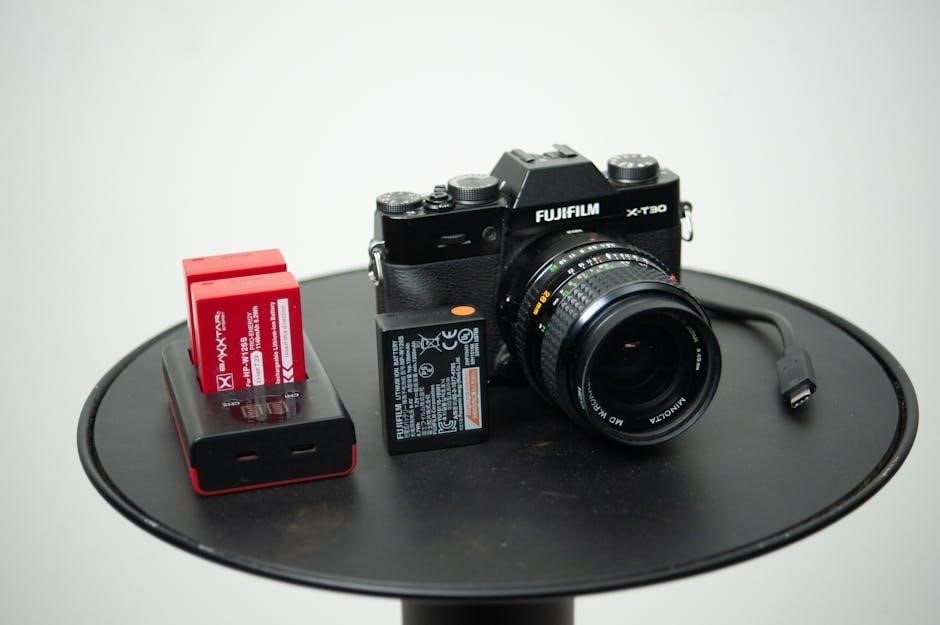Delta-Q QuiQ 48 Volt Battery Charger Manual: A Comprehensive Guide
This comprehensive guide provides essential safety, operating, and installation instructions for standard Delta-Q QuiQ 48V chargers. Designed for various applications, including golf carts, electric vehicles, and industrial machines, this manual will help you understand the charger’s features and operation.
The Delta-Q QuiQ series of battery chargers represents a significant advancement in charging technology, offering a robust and reliable solution for a wide range of electric vehicles and industrial equipment. Specifically, the 48-volt model is engineered to provide optimal charging performance for battery packs commonly found in golf carts, floor cleaning machines, electric forklifts, and other similar applications.
This manual serves as a comprehensive guide to the Delta-Q QuiQ 48V charger, providing users with the necessary information to install, operate, and maintain their charger effectively. Understanding the features and functionalities of the QuiQ charger is crucial for maximizing its performance and ensuring the longevity of your batteries. The QuiQ series is designed with ease of use in mind, featuring LED status indicators and charge cycle tracking capabilities.

Moreover, some models offer remote LED displays for added convenience. This introduction will lay the groundwork for a deeper dive into the charger’s specifications, installation procedures, operating instructions, troubleshooting tips, and other valuable information. By following the guidelines outlined in this manual, users can confidently utilize the Delta-Q QuiQ 48V charger to achieve efficient and dependable battery charging.
Understanding the Delta-Q QuiQ Series
The Delta-Q QuiQ series is a family of high-frequency battery chargers designed for electric vehicles and industrial equipment. These chargers are known for their reliability, efficiency, and ability to optimize battery performance. The QuiQ series offers a range of voltage options, including the popular 48-volt model, catering to diverse applications. These chargers are built to withstand harsh environments, featuring sealed enclosures that protect against dirt, mud, dust, and water ingress.
One of the key features of the QuiQ series is its programmable charging algorithms. These algorithms allow users to customize the charging process for specific battery types, ensuring optimal charging and extending battery life. The series also incorporates advanced charge cycle tracking, enabling users to monitor charging habits, verify warranty claims, and troubleshoot charging issues. Furthermore, the QuiQ series boasts a wide input voltage range, making it suitable for global use.
With power factor correction, these chargers operate efficiently and minimize energy waste. Understanding the QuiQ series’ capabilities is crucial for selecting the right charger and maximizing its benefits. This manual provides detailed information on the various models within the QuiQ series, their features, and their applications.
Key Features of the Delta-Q QuiQ 48V Charger
The Delta-Q QuiQ 48V charger stands out with its robust set of features designed for optimal battery charging and longevity. Its compatibility with multiple battery types, including Lead-Acid, AGM, and Lithium-Ion, makes it a versatile choice for various applications. The charger’s intelligent programming allows for customized charge profiles, ensuring the battery receives the correct charge for its specific type and condition. This programmability optimizes battery performance and extends its lifespan.
Equipped with LED status indicators, the QuiQ 48V charger provides real-time feedback on the charging process. These indicators clearly display the charging status, fault codes, and other important information. The charger also features advanced charge cycle tracking, allowing users to monitor charging habits and identify potential issues. This data can be downloaded for analysis and troubleshooting, helping to maintain optimal battery health.
Designed for durability, the QuiQ 48V charger boasts a sealed enclosure that protects it from environmental elements such as dirt, dust, and moisture. Its wide AC input voltage range (85-265 VAC) makes it suitable for global use. The inclusion of power factor correction ensures efficient operation and reduces energy waste. These features combine to make the Delta-Q QuiQ 48V charger a reliable and high-performing solution for your battery charging needs.
Installation Instructions for QuiQ 912-48xx
Before commencing the installation of your QuiQ 912-48xx charger, carefully review this section and all accompanying safety guidelines. Begin by ensuring that the nominal battery pack voltage matches the charger’s voltage, which is 48V for this model. Incorrect voltage matching can lead to damage or hazardous situations.
Select a suitable mounting location that is clean, dry, and well-ventilated. The charger should be mounted securely to prevent movement or vibration during operation. Use appropriate hardware to fix the charger to the chosen surface, ensuring that it can support the charger’s weight. Next, connect the DC output cables to the battery pack, paying close attention to polarity. Connect the positive (+) cable to the positive terminal and the negative (-) cable to the negative terminal. Ensure that the connections are tight and secure.
Connect the AC input power cord to a grounded electrical outlet. The QuiQ 912-48xx operates within a wide input voltage range (85-265 VAC), making it adaptable to various power sources. Avoid connecting the charger to a circuit that is already burdened with other devices. After verifying all connections, power on the charger. The LED indicators will illuminate, displaying the charger’s status. Refer to the LED Status Indicators section for details on interpreting these signals. If any issues arise during installation, consult the Troubleshooting section of this manual.
Operating Instructions and Safety Precautions
To ensure safe and efficient operation of your Delta-Q QuiQ 48V battery charger, carefully follow these instructions and safety precautions. Before initiating any charging cycle, verify that the battery type selected on the charger matches the type of battery you are charging (Lead-Acid, AGM, Lithium-Ion). Using an incorrect setting can damage the battery and void the warranty.
Ensure the charger is placed in a well-ventilated area, away from flammable materials or liquids. Never cover the charger during operation, as this can lead to overheating. Connect the charger to the battery following the correct polarity: positive to positive and negative to negative. A reverse polarity connection can damage both the charger and the battery. Once connected, plug the charger into a grounded AC power outlet.
Monitor the charging process via the LED indicators; These lights provide information about the charging stage and any potential faults. Do not disconnect the charger while it is in operation unless absolutely necessary. If a fault code appears, consult the troubleshooting section of this manual. Always disconnect the charger from the AC power source before disconnecting it from the battery. Store the charger in a dry, clean place when not in use. Regular inspection of the cables and connections is recommended to ensure proper functionality and safety.
LED Status Indicators and Their Meanings
The Delta-Q QuiQ 48V battery charger utilizes LED status indicators to provide real-time feedback on the charging process and any potential issues. Understanding these indicators is crucial for proper operation and troubleshooting. A solid green LED typically indicates that the battery is fully charged and the charging cycle is complete. A flashing green LED may signify that the charger is in maintenance mode, keeping the battery at its optimal level.
A solid yellow or amber LED usually means the charger is in the bulk charging stage, delivering the maximum current to the battery. A flashing yellow or amber LED could indicate the absorption charging stage, where the voltage is held constant while the current decreases. Red LED indicators typically signal a fault or error condition. A solid red LED might indicate a critical error, such as a reversed polarity connection or an internal charger failure. A flashing red LED often points to a less severe issue, like a high temperature condition or a problem with the battery connection.
Consult the troubleshooting section of this manual to identify the specific fault code associated with the flashing red LED and its corresponding resolution. Always ensure that the charger is properly connected and the battery is in good condition before interpreting the LED status.
Troubleshooting Common Issues
The Delta-Q QuiQ 48V battery charger is designed for reliable performance, but occasionally, users may encounter issues. One common problem is the charger failing to initiate a charge cycle. This can often be traced to a poor connection between the charger and the battery. Ensure that the battery cables are securely attached to the correct terminals and free from corrosion. Another frequent issue is the charger displaying a fault code.
Refer to the LED status indicators section of this manual to identify the specific fault code and its meaning; Overheating is another potential problem, usually caused by inadequate ventilation. Ensure the charger is placed in a well-ventilated area, away from direct sunlight and other heat sources. If the charger frequently overheats, consider inspecting the cooling fan for proper operation.
In some cases, the battery may not be accepting the charge. This could be due to a damaged or deeply discharged battery. Try testing the battery with a voltmeter to assess its condition. If the battery voltage is significantly below the nominal voltage, it may need replacement. Regularly inspect your battery’s state to ensure optimal performance and extend its lifespan, preventing future charging issues.
Fault Codes and Their Resolutions
The Delta-Q QuiQ 48V charger utilizes LED indicators to communicate operational status and potential faults. Understanding these fault codes is crucial for efficient troubleshooting. A flashing red LED often indicates a critical error requiring immediate attention. One common fault code signifies an over-voltage condition, which may result from an incorrect battery selection or a malfunctioning charging algorithm. Disconnecting the charger and verifying the battery voltage is within the specified range is the first step.
Another frequent fault involves temperature-related issues. If the charger detects an excessively high temperature, it will shut down to prevent damage. Ensure adequate ventilation and allow the charger to cool before attempting to restart. A fault code related to communication errors may indicate a problem with the internal circuitry or external connections. Inspect all cables and connectors for damage and ensure they are securely connected.
For persistent fault codes, consulting the detailed troubleshooting guide is essential. Some faults might require professional repair or replacement of components. Always disconnect the power supply before performing any maintenance or repairs. Proper identification and resolution of fault codes ensure the continued safe and efficient operation of your Delta-Q QuiQ 48V battery charger.
Charge Cycle Data and its Significance
The Delta-Q QuiQ series chargers meticulously track charge cycle data, offering valuable insights into battery performance and charging habits. This data can be easily downloaded, providing a detailed record of each charging session. Examining this information allows users to verify warranty claims, optimize charge algorithms for specific applications, and enhance overall system reliability through advanced charge troubleshooting. Key parameters tracked include voltage, current, and charging time at different stages of the charge cycle.
Analyzing charge cycle data helps identify potential issues such as premature battery degradation or inefficient charging profiles. For instance, consistently short charging times may indicate a battery nearing the end of its life, while prolonged absorption stages suggest a mismatch between the battery and the charging algorithm. Furthermore, this data assists in customizing charging profiles to suit specific battery types and usage patterns, maximizing battery lifespan and performance.

The ability to monitor and analyze charge cycle data empowers users to proactively manage their battery systems, leading to reduced downtime, improved efficiency, and extended battery life. Regularly reviewing this data is a crucial aspect of maintaining optimal performance and preventing costly battery replacements.

Customization Options for Specific Applications
The Delta-Q QuiQ 48V charger offers a range of customization options to tailor charging profiles for specific applications and battery types. With ten pre-programmed charge profiles for both flooded and sealed batteries, users can select the most suitable option for their needs. Moreover, the charger’s firmware can be updated to accommodate new battery chemistries or evolving application requirements, ensuring long-term compatibility and optimal charging performance.
Customization extends to parameters like charging voltage, current limits, and absorption times, allowing users to fine-tune the charging process to maximize battery life and efficiency. For example, applications with frequent partial discharges may benefit from a customized profile that prioritizes rapid charging, while those with infrequent deep discharges may require a profile that emphasizes equalization and long-term maintenance.
Furthermore, the Delta-Q QuiQ series supports custom charge algorithms, enabling advanced users to create highly specialized charging profiles for unique battery configurations or demanding applications. This level of flexibility ensures that the charger can be optimized for a wide variety of scenarios, delivering the best possible performance and extending the lifespan of the connected batteries. The capability to tailor charging profiles is crucial in maximizing battery performance.
Compatibility with Different Battery Types (Lead-Acid, AGM, Lithium-Ion)
The Delta-Q QuiQ 48V battery charger is engineered to provide versatile compatibility with a wide array of battery types, including lead-acid, AGM (Absorbent Glass Mat), and lithium-ion batteries. This adaptability is crucial for users who may operate different types of batteries within their applications or plan to transition to newer battery technologies in the future. The charger’s ability to support multiple chemistries ensures that it can deliver the optimal charging profile for each battery type, maximizing performance and extending service life.
For lead-acid batteries, the charger offers specific charging algorithms tailored to flooded, gel, and AGM variants. These algorithms carefully manage the charging voltage and current to prevent overcharging, sulfation, and other common issues that can degrade lead-acid battery performance. For lithium-ion batteries, the charger provides precise voltage and current control to ensure safe and efficient charging, while also incorporating features like cell balancing to optimize battery pack health.
The Delta-Q QuiQ series delivers exceptional performance and longevity across a wide range of battery technologies. This ensures that the investment in a charger is protected, regardless of the battery type used. The charger adapts to the specific requirements. This is vital for maximizing battery performance and lifespan.
Maintenance and Care for Long-Term Performance
Ensuring the longevity and consistent performance of your Delta-Q QuiQ 48V battery charger requires adherence to a few key maintenance and care practices. Regular inspection is paramount; visually examine the charger’s cables and connectors for any signs of damage, such as fraying, cracking, or corrosion. Damaged cables can impede charging efficiency and pose safety hazards, necessitating prompt replacement.
Maintaining a clean environment around the charger is equally important. Dust, dirt, and debris can accumulate on the charger’s surface, hindering its ability to dissipate heat effectively. Use a dry cloth to gently wipe down the charger’s exterior regularly. Avoid using solvents or harsh chemicals, as these can damage the charger’s housing.
Proper ventilation is crucial for preventing overheating. Ensure the charger is placed in an open, well-ventilated area during operation. Avoid enclosing the charger in confined spaces or covering it with materials that could trap heat. Overheating can significantly reduce the charger’s lifespan and compromise its performance.
By implementing these simple yet effective maintenance and care practices, you can significantly extend the lifespan of your Delta-Q QuiQ 48V battery charger and ensure its continued reliable performance.
Accessing Technical Resources and Downloads

Delta-Q Technologies provides a comprehensive online library of technical resources and downloads to support users of the QuiQ 48V battery charger. This readily available information empowers users to optimize charger performance, troubleshoot issues, and stay informed about the latest product updates.
The primary hub for accessing these resources is the Delta-Q Technologies website. Navigate to the “Support” or “Downloads” section to find a wealth of information, including product manuals, application notes, and software updates. Product manuals offer detailed specifications, installation instructions, operating procedures, and troubleshooting guides.
Application notes provide in-depth insights into specific charger applications and best practices. Software updates ensure your charger is running the latest firmware, incorporating performance enhancements and bug fixes. In addition to the website, Delta-Q Technologies may also distribute technical resources through authorized distributors and partners.
For specific E-Z-GO vehicle models, consult the user guides available for download, which provide tailored instructions and settings for optimal charging. These resources are regularly updated to reflect the latest product developments and user feedback, ensuring you have access to the most accurate and helpful information.